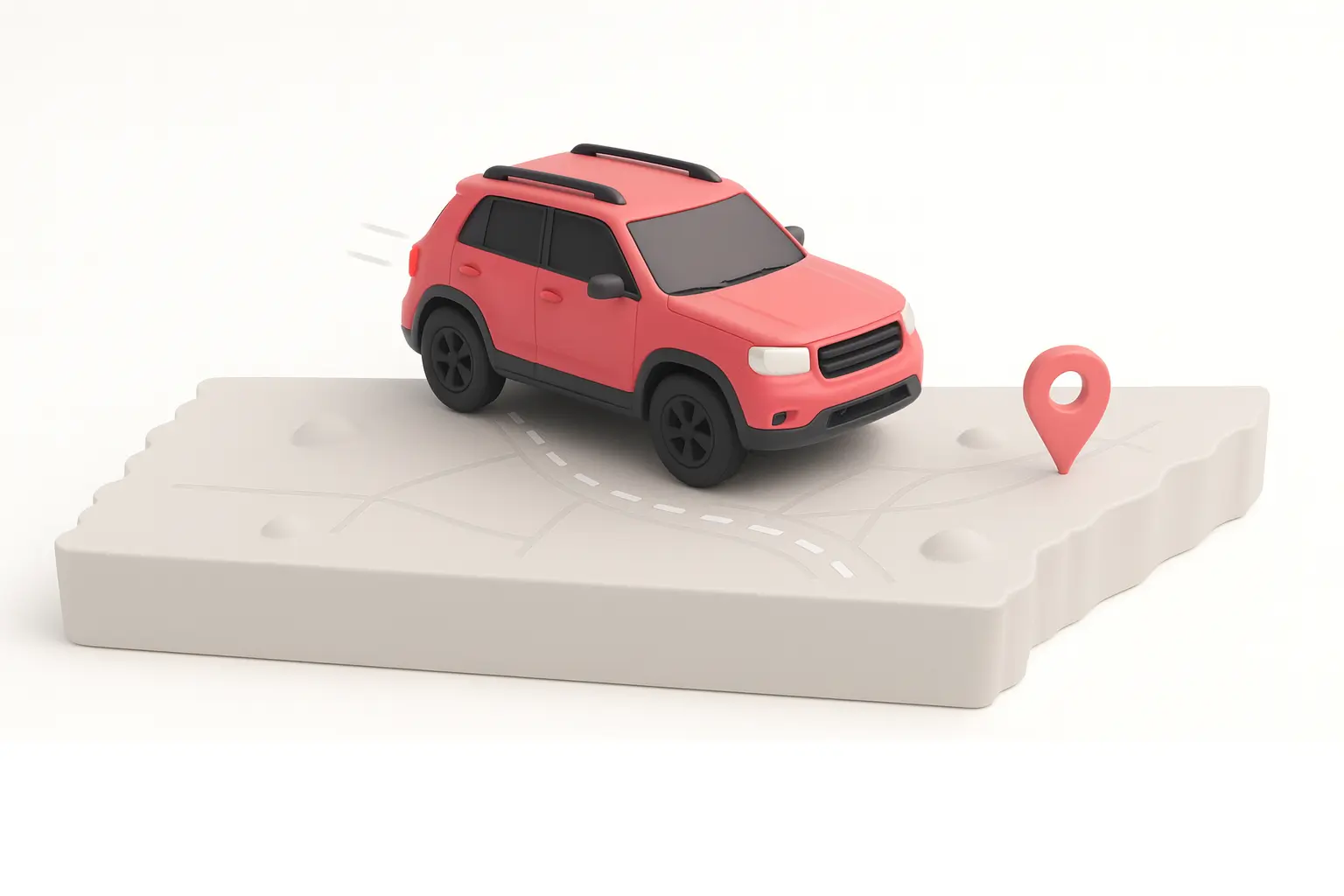For most drivers, a standard brake fluid flush with a full system bleed lands around $110–$160 at independent shops and $140–$220 at dealerships. If there’s a leak, costs will depend on what failed.
Real customers Jerry helped
While pricing points can shift based on individual factors, Jerry uses real customer experiences to show what drivers are paying right now. Here are some examples of customers Jerry has helped.
Estimates are modeled based on real vehicle and location data; names have been changed. Actual prices will vary by shop, parts, and vehicle condition.
What is a brake fluid replacement?
Brake fluid replacement usually means either a maintenance fluid change/flush or fixing a leak and then bleeding the system. Brake fluid transfers pedal force to calipers/wheel cylinders, resists boiling under heat and lubricates seals. Since it absorbs moisture, it lowers boiling point over time and can corrode components.
Service intervals to keep in mind:
- Many automakers recommend inspection/replacement every 2–3 years.
- European brands commonly specify 2 years.
Types of brake fluid you may encounter:
- DOT 3, DOT 4, DOT 5.1: Glycol-based and compatible if specs allow.
- DOT 4 LV: Required for many late-model ABS/ESC cars.
- DOT 5 (silicone): Not compatible with ABS unless specified.
What are the signs I need a brake fluid service?
Jerry customers are seeing these common signs of brake fluid repair:
- Spongy, soft or sinking brake pedal (firms up when pumped).
- Longer stopping distances.
- ABS/brake dashboard lights.
- Dark or murky fluid in the reservoir.
- Visible leaks near calipers, hoses or lines.
- Low fluid in reservoir (common as pads wear).
- Service interval elapsed (2–3 years typical).
- Brake fluid on the driver’s side floor mat (leak will appear along the brake pedal under the dash where it connects to the master cylinder).
Safety note: If your pedal sinks to the floor or you suspect a leak, do not drive—tow the vehicle.
Cost breakdown: Why the price varies
Key factors influencing cost include:
Vehicle and brake system complexity: Performance or luxury models with sophisticated ABS/ESC can add 20%–50% to the bill due to higher labor time and specialized bleeding procedures. Some ABS systems require a scan tool to cycle valves during bleeding, adding $30–$120 in labor (expect an “ABS service bleed” line item).
Fluid type and quantity: DOT 4/DOT 5.1 cost more than DOT 3 but usually add only $10–$30. For larger systems (trucks/SUVs), add $15–$60.
Rust and seized hardware: Corroded fittings/lines can add $100–$400 in labor.
Labor rate and region: $90–$180/hr, with urban/coastal areas at the higher end.
Add-on services: Pads/rotors, sticking pins or contaminated pads can add $200–$600 when bundled.
Rule of thumb: A clean, rust-free car with routine service stays near the bottom of the cost range. Leaks, ABS bleeds or rust all push costs upward.
Your action plan: How to save money
A little preparation and the right questions will keep your brake fluid repair squarely in the fair-price zone.
Steps to minimize costs include:
Confirm the “why.”
Ask for moisture % or copper ppm readings or a photo of dark fluid. The Jerry app’s diagnostic tool can help sort through these details as well.
Match the spec.
Use exactly what your cap/manual calls for.
Request a full system bleed.
Ensure the proper OEM sequence or ABS service bleed if needed.
Fix root causes first.
Low fluid usually means pad wear or leaks.
Combine services.
Bundle with pads/rotors to save duplicate labor.
Inspect for rust.
Get a clear section-by-section plan if lines are crusty.
Get itemized quotes.
Verify fluid type, bleed procedure, labor hours and fees.
DIY vs. Pro: Can I do this myself?
You can DIY a basic flush if you have the tools and confidence. But ABS scan-tool requirements, rusted lines or seized bleeders usually call for a pro. Use the Jerry app’s diagnostic and pricing tools to help make an informed decision.
Here’s how DIY compares to a pro shop:
Pro tips: Use fresh fluid—never use open containers of brake fluid. Follow OEM bleed order, keep reservoir topped, avoid >25 psi when pressure-bleeding and stop if a bleeder seizes or if fluid does not come out.
Don’t use DOT 5 brake fluid. Temperatures encountered in street driving, even hard driving, are not high enough to need DOT 5 fluid. Never mix DOT 5 fluid with DOT 3 or 4. No top offs. DOT 5.1 fluid is compatible with DOT 3 and 4 and has a higher boiling point than 3 and 4. There’s no advantage in using DOT 5.1 unless you replace all the fluid in the system. Keep it simple and stay with DOT 3 or 4.
Unless your car regularly sees track time, don’t use ultra high performance brake pads. The friction material in these pads is formulated to develop maximum grip when the pads reach temperatures you’ll never see in street driving. The brakes will require higher pedal effort at the cooler street temperatures. Brake pads one step up from street use are probably okay.
Cross-drilled brake rotors definitely look cool, but they are another import from the world of racing with little benefit for street driving. The purpose of the cross drilling is to vent away the gas produced at contact points, thus improving brake performance. Street brakes never get hot enough for the cross drilling to make any difference, but they do look cool – and that’s why they’re on my car.

Related repairs
Brake fluid service often comes with other brake jobs. Jerry customers are bundling these common companions:
- Pads/rotors: $250–$600 per axle
- Caliper replacement: $250–$600 each
- Wheel cylinder: $150–$300 each
- Master cylinder: $250–$550 installed
- Rubber hose: $150–$300 per corner
- Steel brake line: $150–$400 (full-line replacement >$800 in rust-belt)
- ABS control unit: $800–$1,500+
Bundling saves on duplicate labor and avoids a second bleed.
Download the Jerry app to get started today and join other customers who’ve taken the hassle out of brake repairs and maintenance. Quotes are based on live labor guides and local parts pricing; taxes and shop fees may apply.
What our customers are asking
-
Is it safe to drive with a leak?
-
How often should I change brake fluid?
-
Will a flush fix a soft pedal?
-
Can I just top off the reservoir?
-
What’s the difference between a bleed and a flush?
-
Is DOT 5 better?
-
Does ABS change the job?
-
Why is my fluid dark?

Spencer Clayton is a mechanic, writer and fabricator who has hands that know their way around engines and a passion for storytelling. He’s diagnosed complex faults, built high performance engines and custom fabricated everything from fine detail parts to entire chassis while sharing how things work and why they matter. His background in everything from dealership technician work to building high performance cars spans a large breadth of experience, and he is driven by a love of all things automotive and a desire to share knowledge.

Steve Kaleff began working on cars at the very young age of nine years old, when his dad actually let him make fixes on the family car. Fast forward to the beginning of a professional career working at independent repair shops and then transitioning to new car dealerships. His experience was with Mercedes-Benz, where Steve was a technician for ten years, four of those years solving problems that no one could or wanted to fix. He moved up to shop foreman and then service manager for 15 years. There have been tremendous changes in automotive technology since Steve started his professional career, so here’s looking forward to an electric future!

Nick Wilson is an editor, writer, and instructor across various subjects. His past experience includes writing and editorial projects in technical, popular, and academic settings, and he has taught humanities courses to countless students in the college classroom. In his free time, he pursues academic research, works on his own writing projects, and enjoys the ordered chaos of life with his wife and kids.










